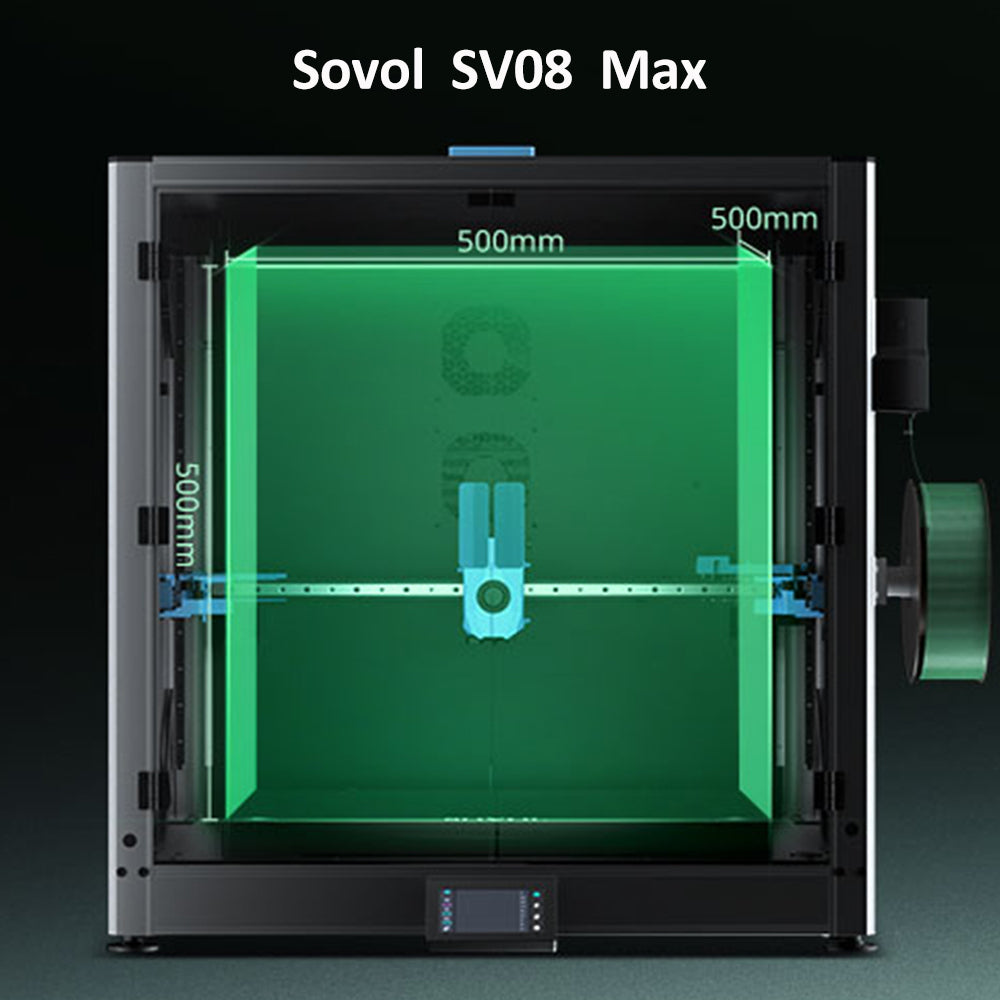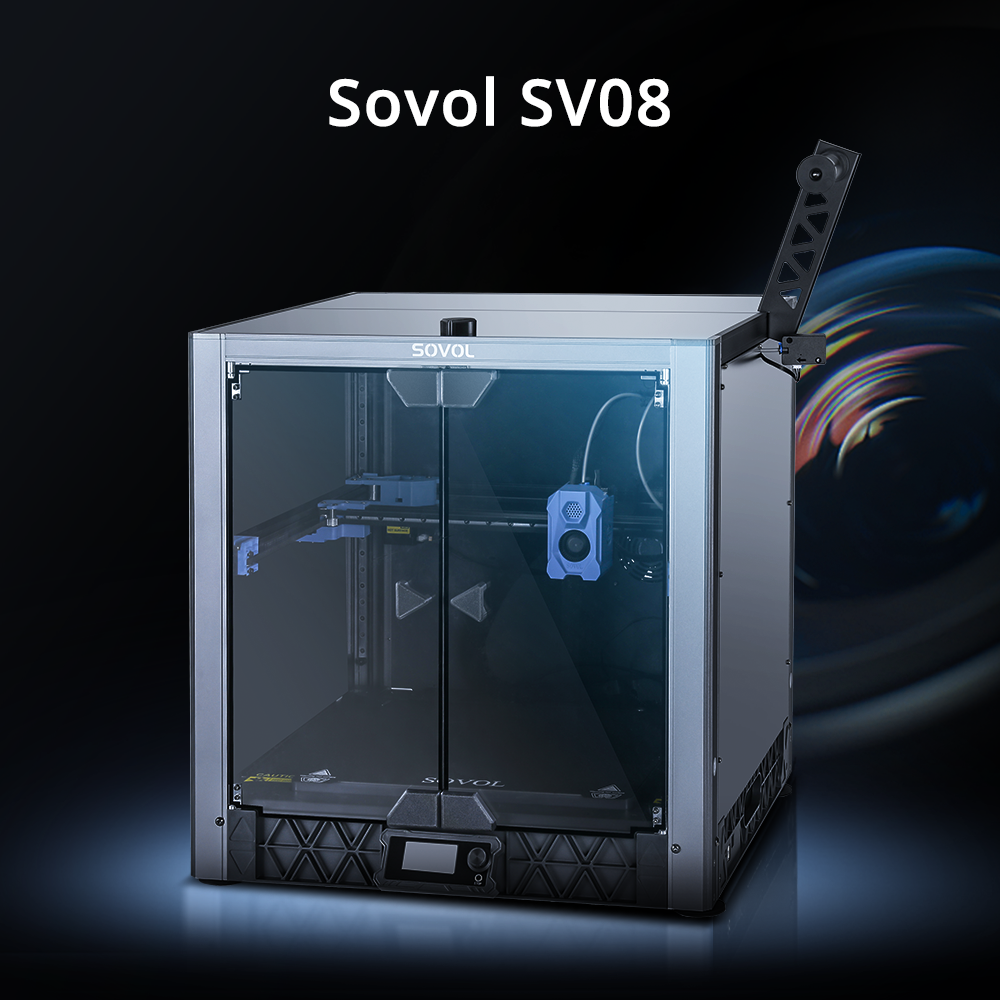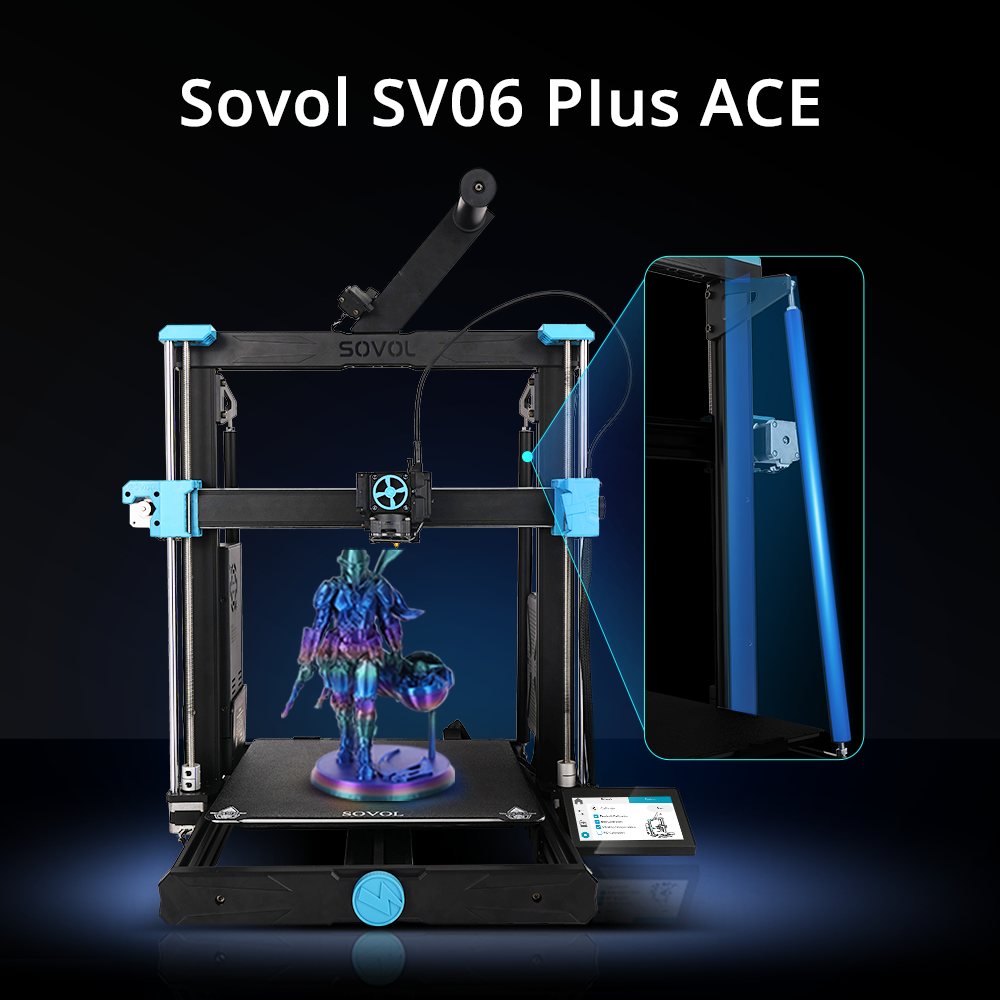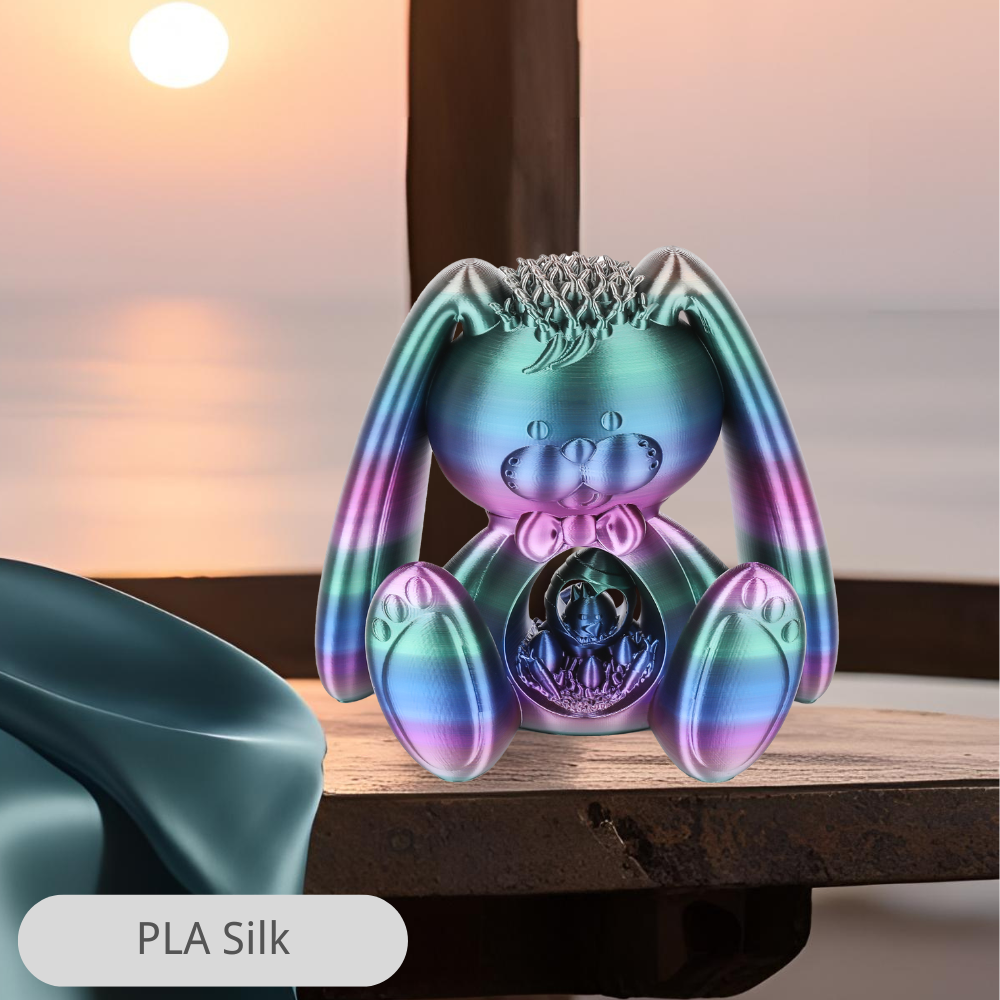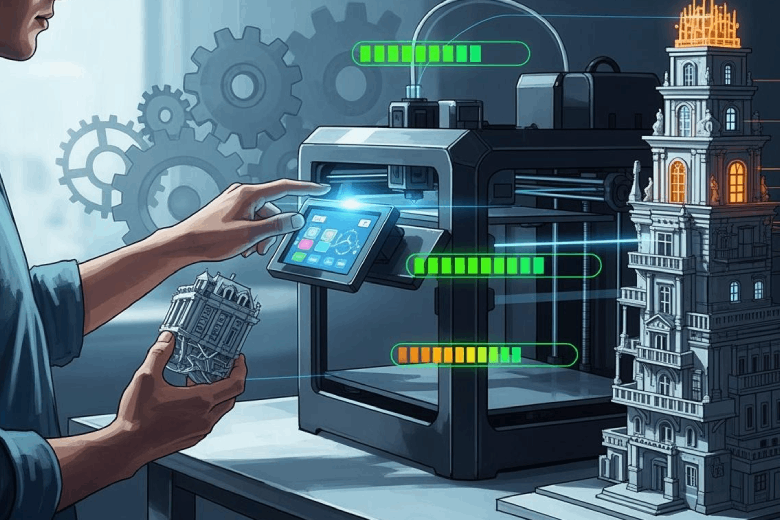You want to decrease print time but keep your 3D prints looking sharp. Factors like layer height, nozzle diameter, print speed, and cooling all play important roles in balancing speed with quality. Even small adjustments in these areas can create noticeable improvements in both efficiency and results.
Key Takeaways
- Adjust layer height to balance speed and quality. Thicker layers reduce print time but may affect surface finish.
- Utilize adaptive layer heights in your slicer. This feature allows for faster prints without sacrificing detail in complex areas.
- Simplify model geometry to decrease print time. Fewer intricate designs lead to quicker prints and less need for support material.
Settings to Decrease Print Time
Layer Height & Shells
You can make a big impact on print speed by adjusting the layer height. Thicker layers mean fewer passes for your printer, which helps decrease print time. For example, printing at 0.3 mm instead of 0.1 mm reduces the number of layers needed for the same object height. This change speeds up the process, but you may notice more visible layer lines and a rougher surface. Thinner layers give you smoother finishes and better detail, but they take much longer.
|
Effect |
Thicker Layers |
Thinner Layers |
|---|---|---|
|
Print Time |
Decreases due to fewer layers |
Increases due to more layers |
|
Print Quality |
Poor adhesion, visible layer lines |
Better detail, smoother surface finish |
|
Structural Integrity |
Weaker bonds, potential for failure |
Less stairstep effect, but more errors |
When you adjust shell thickness, aim for about two nozzle diameters (around 0.8 mm) for most prints. This setting keeps your parts strong without adding unnecessary print time. For extra strength, you can increase wall thickness to 2-3 mm, but this will add time. Top and bottom thickness should stay between 1.6 and 2 mm for a good balance of strength and speed.
Tip: Start with a moderate layer height and shell thickness. Test small changes to see how they affect both speed and quality.
Print Speed & Temperature
Print speed directly affects how fast your printer completes a job. Most PLA prints work well between 40 mm/s and 150 mm/s. If you want high detail, use slower speeds like 30-60 mm/s. For a balance between speed and quality, try 60-100 mm/s. If you need to finish quickly and can accept minor flaws, speeds up to 150 mm/s are possible.
- PLA Typical Print Speed: 50-70 mm/s
- PLA Maximum Print Speed: Up to 150 mm/s
You should also adjust the print temperature when you increase speed. Higher temperatures help the filament melt and flow faster, which is important for good layer adhesion at higher speeds. For PLA, a range of 180-220°C works well. If you print too fast without raising the temperature, you risk poor bonding and weak prints.
Note: Always check your filament’s recommended temperature range. Each material has its own needs.
Adaptive Layer Heights
Adaptive layer height is a smart feature in many slicers. It lets your printer use thicker layers in simple areas and thinner layers where you need detail. This approach helps decrease print time without losing quality on complex surfaces.
- Adaptive layer height uses fine layers for detailed sections and coarse layers for flat or simple areas.
- You get smoother curves and sharp features where it matters, while saving time on less important parts.
- This method also uses material more efficiently, making it a practical choice for large or intricate models.
Pro Tip: Enable adaptive layer height in your slicer for models with both detailed and simple regions. You will notice faster prints and high-quality results.
Combine Infill Layers
Combining infill layers is another way to decrease print time. Instead of printing every infill layer separately, your printer can merge several layers together. This technique not only speeds up the process but also improves part strength by enhancing interlayer adhesion.
- Multi-layer infill configurations create stronger bonds, especially with honeycomb or grid patterns.
- You save time because the printer spends less effort on the inside of the model, focusing more on the outer walls and top surfaces.
Tip: Use combined infill layers for functional parts that need strength and quick turnaround.
By making these adjustments, you can decrease print time while keeping your prints strong and visually appealing. Always test changes on small models before committing to large projects. This approach helps you find the best balance for your specific printer and material.
Model Design to Decrease Print Time
Design choices have a major impact on how quickly your 3D printer completes a job. By making smart adjustments to your model, you can decrease print time without sacrificing quality or strength.
Simplify Geometry
Complex models take much longer to print than simple ones. When you simplify geometry, you reduce the number of layers and intricate movements your printer must perform. For example, a basic cube prints in about an hour, while a detailed car model could take several hours or even a full day. More complex shapes also require extra support structures, which further extend print time.
- Simplifying geometry reduces the number of layers.
- Fewer intricate movements mean faster prints.
- Simple shapes need less support material.
You can follow these best practices to optimize your designs:
- Increase layer height for quick prints.
- Only print features that benefit from 3D printing.
- Minimize the surface area of your parts.
- Limit the need for support material.
- Plan your design with print orientation in mind.
- Split complex parts into smaller, easier-to-print pieces.
Hollow Models & Infill Choices
Making your models hollow or adjusting infill density can dramatically decrease print time. Hollow models use less material and print faster, but you must balance this with the strength required for your application. Infill patterns and densities affect both the weight and durability of your print.
|
Infill Density (%) |
Impact on Strength |
Impact on Weight |
Impact on Print Time |
|---|---|---|---|
|
0-15 |
Low strength, good for decorative parts |
Minimal material usage |
|
|
15-50 |
Moderate strength, ideal for prototypes |
Balanced material usage |
Moderate print time |
|
50-100 |
Maximum strength, for functional parts |
Increased material usage |
Increased print time |
For most non-functional prints, you can use low infill densities or even hollow models to decrease print time. Lightning infill or gyroid patterns also help speed up the process while maintaining enough strength for many uses.
Note: Always match infill settings to the purpose of your print. Decorative objects need less strength than mechanical parts.
Print Orientation
The way you orient your model on the build plate can significantly affect print time and support material usage. Changing orientation from vertical to horizontal often reduces the number of layers needed, which leads to faster prints.
|
Orientation Type |
Print Time (hours) |
Parts per Build |
Support Material Usage |
|---|---|---|---|
|
Tall Orientation |
5.4 |
42 |
Higher |
|
Short Orientation |
1.2 |
10 |
Lower |
- Orienting a cylinder horizontally may require only 100 layers, while printing it vertically could need 300 layers.
- Fewer layers mean less time spent printing.
- Lowering the Z-height of your model is one of the easiest ways to decrease print time.
You can also follow these best practices:
|
Best Practice |
Description |
|---|---|
|
Reduce need for support |
Orient parts to minimize suspended material. |
|
Use tree or soluble supports |
These supports are easier to remove and save post-processing time. |
|
Orient holes vertically |
Reduces the need for support structures. |
|
Apply the 45° rule |
Keep overhangs below 45° to avoid extra supports. |
|
Shorter is faster |
Minimize Z-height for quicker prints. |
Print in Parts
Sometimes, printing a model in several smaller parts instead of one large piece can help decrease print time. This approach allows you to optimize each part’s orientation and infill, reducing the need for supports and minimizing print failures.
|
Advantage/Disadvantage |
Description |
|---|---|
|
You can create complex designs by assembling smaller parts. |
|
|
Speed for One-off Parts |
Printing single parts can be faster, but batch production may slow down. |
|
Impact on Physical Properties |
The printing process can affect material properties due to thermal stresses. |
Printing in parts also makes it easier to replace or reprint a single section if something goes wrong. You can often finish a project faster by assembling smaller, quickly printed pieces rather than waiting for one large print to complete.
Note: When splitting models, design connection points that are easy to assemble and strong enough for your application.
By focusing on model design, you can decrease print time while maintaining the quality and strength you need. Small changes in geometry, infill, orientation, and part division can make a big difference in your 3D printing workflow.
Printer Upgrades & Maintenance
Larger Nozzle Use
You can decrease print time by switching to a larger nozzle. A wider nozzle lets you print thicker layers and wider perimeters, which means your printer finishes jobs faster. For example, a 0.60mm nozzle can cut print time in half for simple objects like headphone stands or flower pots. You will notice that larger nozzles struggle with fine details and small text, so they work best for functional parts or models that do not require high resolution.
Tip: Use a larger nozzle for prototypes, mechanical parts, or any print where speed matters more than intricate detail.
Regular Maintenance
Keeping your printer in top shape helps you maintain fast print speeds and high-quality results. You should clean the nozzle regularly to ensure smooth filament flow. Tight belts keep your printer’s movements precise, which prevents slowdowns and misalignments. Oiling rails and moving parts helps your printer operate smoothly, leading to more accurate prints.
Here are some recommended maintenance routines:
- Clean rollers and paths to prevent jams.
- Update drivers and firmware for optimal performance.
- Inspect toner cartridges and ink levels to avoid interruptions.
- Calibrate your printer to maintain accuracy.
- Schedule professional servicing for complex issues.
- Troubleshoot common problems before they affect print speed.
Note: Regular maintenance prevents clogs, reduces wear, and keeps your prints looking sharp.
Upgrading your printer can also make a big difference. Newer models offer faster print speeds, automatic double-sided printing, and large-capacity trays. Mobile printing features let you start jobs quickly from any device. These upgrades help you save time and boost efficiency, especially for high-volume tasks.
Slicing Software Efficiency
Slicer Settings
You can optimize slicer settings to decrease print time while maintaining high print quality. Slicing software offers features that let you control layer height, print speed, and infill density. Adjusting these settings gives you direct control over how fast your printer works and the final appearance of your parts.
|
Feature |
Description |
Impact on Print Time and Quality |
|---|---|---|
|
Layer height adjustment |
Controls the thickness of each printed layer. |
Finer layers increase time; coarser layers speed up printing. |
|
Variable layer height |
Adjusts layer thickness dynamically within a single print. |
Improves quality in critical areas while reducing overall time. |
|
Adaptive slicing algorithms |
Optimizes layer heights based on model geometry. |
Balances quality and speed without manual adjustments. |
|
Print speed settings |
Controls the movement speed of the print head during extrusion. |
Affects time and quality; slower speeds yield better quality. |
You should also pay attention to settings like flow rate, cooling, and shell thickness. These options affect both print duration and the strength of your finished part.
Tip: Use adaptive slicing algorithms to automatically balance speed and detail. Preview your model in the slicer to see how changes affect print time.
Save & Reuse Profiles
Saving and reusing slicer profiles helps you achieve consistent results and efficient workflows. When you create a profile for a specific material or model type, you can apply it to future projects without reconfiguring settings.
|
Benefit |
Description |
|---|---|
|
Saving profiles enhances production efficiency by minimizing the need for reconfiguration. |
|
|
Reduced Setup Times |
Profiles can be reused across different jobs, leading to quicker setups for new projects. |
|
Enhanced Control |
Consistent profiles help maintain print quality and consistency across various print jobs. |
You can build a library of profiles for different filaments, nozzle sizes, and model types. This approach saves time and ensures you always use proven settings to decrease print time and maintain quality.
Note: Regularly update your profiles as you discover new optimizations. This habit keeps your workflow efficient and your prints reliable.
Mistakes to Avoid
Over-Speeding Risks
You might feel tempted to push your printer to its maximum speed. However, over-speeding often leads to poor results and wasted time. When you print too fast, you risk weak layer adhesion, rough surfaces, and even failed prints. Many users overlook other common mistakes that also impact print time and quality:
- Excessive Overhangs: Overhangs without proper support can cause sagging or failed prints. Always design models to minimize steep overhangs.
- Improper Wall Thickness: Thin walls break easily, while thick walls waste material and increase print time. Find a balance for strength and efficiency.
- Incorrect Mesh Resolution: Low-resolution meshes create rough surfaces. High-resolution meshes slow down printing. Choose the right resolution for your needs.
- Inaccurate Scaling: Incorrect scaling wastes both time and material. Double-check your measurements before starting a print.
- Ignoring Material Guidelines: Each filament type has unique requirements. Always follow the recommended settings for your chosen material.
Cooling & Adhesion Issues
Proper cooling and bed adhesion play a crucial role in achieving high-quality prints. If you neglect cooling, you may see warping or weak layer bonding. For example, PETG can buckle under upper layers if it does not cool correctly. Start prints with the fan off or at a low setting to help layers bond, then increase fan speed for a better surface finish.
- Good cooling prevents warping and ensures strong layers.
- Slow print speeds (around 60 mm/s) improve layer adhesion and print quality.
- Fast speeds can cause poor bed adhesion, leading to failed prints.
Note: Always adjust cooling and speed settings based on your material and model. Careful tuning helps you avoid common pitfalls and achieve reliable results.
You can achieve faster prints without losing quality by combining smart strategies. The table below highlights the most effective methods:
|
Strategy |
Impact on Time |
Impact on Quality |
|---|---|---|
|
Layer Height |
Speeds up printing |
Improves resolution |
|
Adaptive Layers |
Saves time |
Maintains detail |
|
Print Speed |
Reduces duration |
Enhances finish |
|
Infill Density |
Cuts print time |
Increases strength |
Keep experimenting with different settings and model tweaks. Document your results and track what works best for your printer. Consistent notes help you improve print quality and efficiency over time. Stay curious and keep refining your process for the best results.
FAQ
How can you speed up prints without losing strength?
You can increase layer height and use a larger nozzle. Choose a moderate infill pattern. Test settings on small models to find the best balance.
Does faster print speed always reduce quality?
No. You can raise speed moderately and adjust temperature. Maintain proper cooling and shell thickness. Monitor results to avoid visible defects.
What is the best way to avoid failed prints when printing faster?
Always check bed adhesion and calibrate your printer. Use recommended temperature ranges. Watch the first layers closely to catch issues early.

